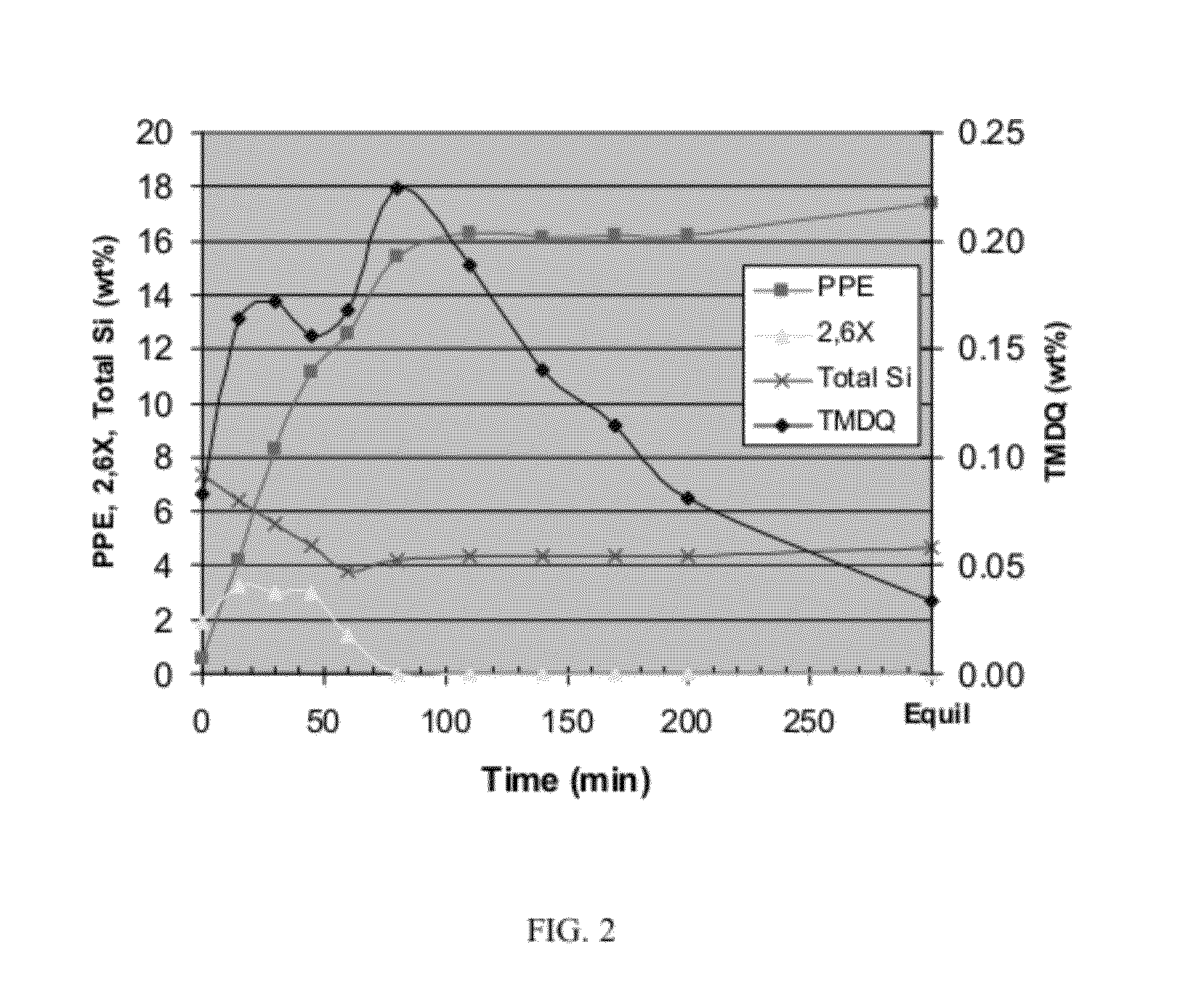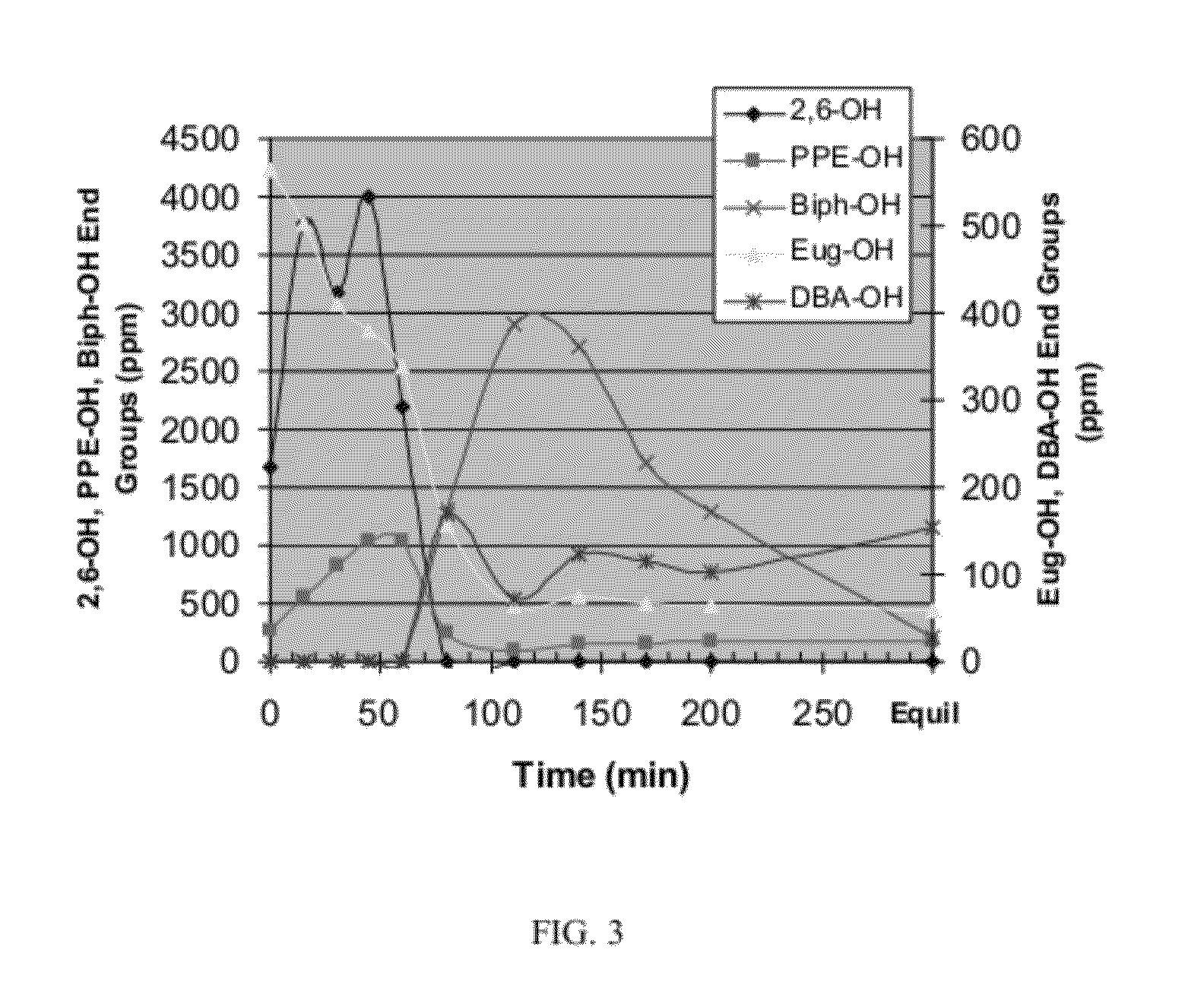Poly(arylene ether)-polysiloxane composition and method
a technology of polysiloxane and arylene ether, which is applied in the field of poly(arylene ether)polysiloxane composition and method, can solve the problems of high efficiency only achieved, the reaction products of banach are limited in use as flame retardant additives or compatibilizers,
- Summary
- Abstract
- Description
- Claims
- Application Information
AI Technical Summary
Benefits of technology
Problems solved by technology
Method used
Image
Examples
working examples
[0116]These examples illustrate the effects of several process variables on product characteristics. Comparative Examples 1-10 were produced in a 1.8 liter RC1 lab reactor. Examples 1-4 and Comparative Examples 11-14 were produced in a 190 liter pilot plant reactor.
[0117]The following materials were used in the synthesis of the poly(arylene ether)-polysiloxane block copolymers: 2,6-dimethylphenol was obtained from SABIC Innovative Plastics LLP; N,N-dimethyl-n-butylamine (DMBA), N,N′-di-tert-butyl-ethylenediamine (DBEDA), and di-n-butylamine (DBA) were obtained from Celanese Ltd.; cuprous oxide (Cu2O) was obtained from American Chemet Corporation; a phase transfer agent was obtained as MAQUAT 4450T from Mason Chemical Company; hydrobromic acid (HBr) was obtained from Diaz Chemical Corporation; toluene was obtained from Ashland; trisodium nitrilotriacetate (NTA) was obtained from Akzo Nobel Functional Chemicals LLC; eugenol-capped polysiloxane fluids were obtained from Momentive Perfo...
PUM
| Property | Measurement | Unit |
|---|---|---|
| weight percent | aaaaa | aaaaa |
| weight average molecular weight | aaaaa | aaaaa |
| temperature | aaaaa | aaaaa |
Abstract
Description
Claims
Application Information
 Login to View More
Login to View More - R&D
- Intellectual Property
- Life Sciences
- Materials
- Tech Scout
- Unparalleled Data Quality
- Higher Quality Content
- 60% Fewer Hallucinations
Browse by: Latest US Patents, China's latest patents, Technical Efficacy Thesaurus, Application Domain, Technology Topic, Popular Technical Reports.
© 2025 PatSnap. All rights reserved.Legal|Privacy policy|Modern Slavery Act Transparency Statement|Sitemap|About US| Contact US: help@patsnap.com



